| Hollywoodland | The Naked City | Jan 20 2023 |

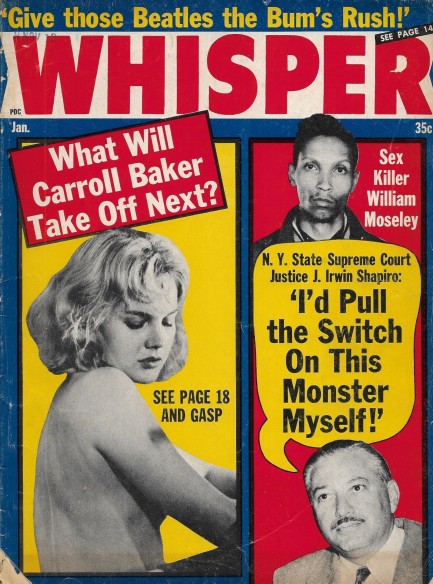
Above is a cover of the tabloid Whisper from January 1965, with actress Carroll Baker, convicted murderer Winston Moseley, and New York judge J. Irwin Shapiro starring on the front. But before we get into the magazine, we want to share the good news that our longtime scanning problems are fixed. We didn't get a new scanner, though. We got a new computer—a Mac Studio with plenty under the hood. It's quicker than the old Mac, but it also changed the functionality of the scanning interface. The whole process runs differently, and is about three times faster now. So you'll be seeing more magazines in the future.
Turning back to Whisper, Winston Moseley—who editors call William for some reason—was America's villain of the moment for the murder of Catherine Genovese, who he stalked, stabbed with a hunting knife, then found again where she had taken refuge in a building, and finished her off. Additionally, Moseley was a necrophiliac. He raped his victims—of which there were three total—post-mortem. Of the trio of victims Genovese is the one that's remembered today because her murder sparked a national reckoning about the relationship between citizens and the police, as well as life in big cities, because the press reported that thirty-eight people had seen the crime happening but had done nothing.
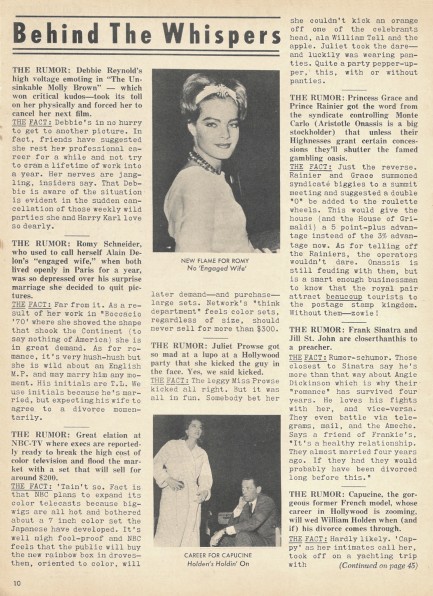

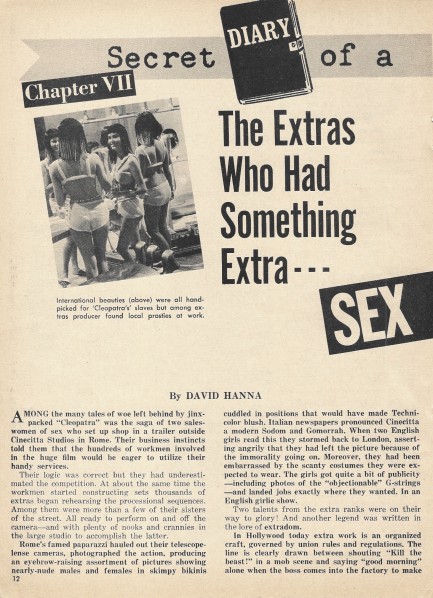
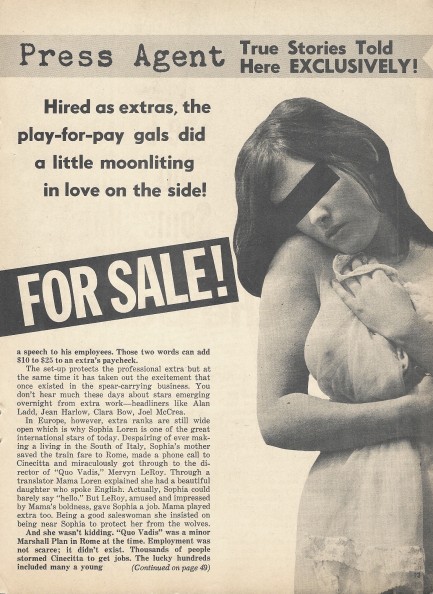
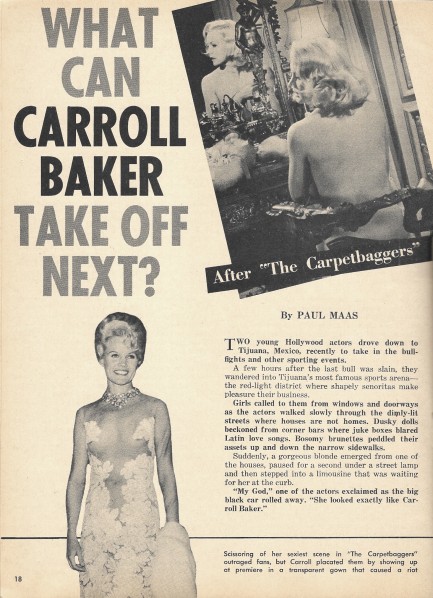
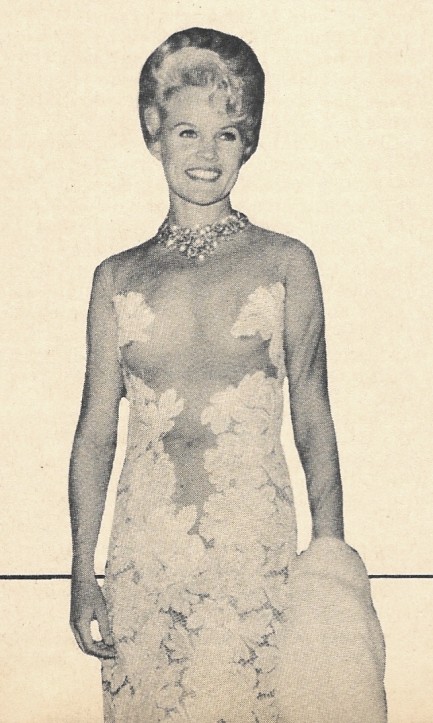
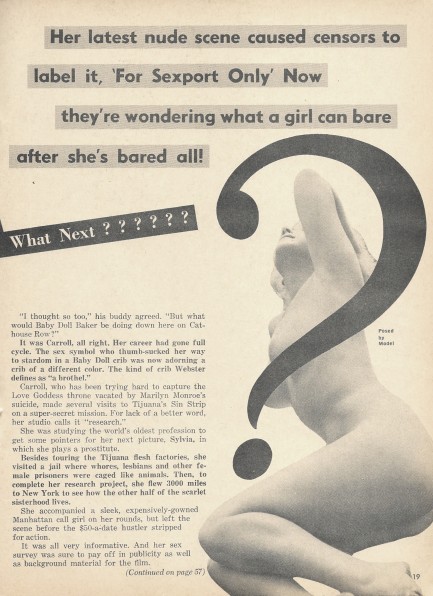
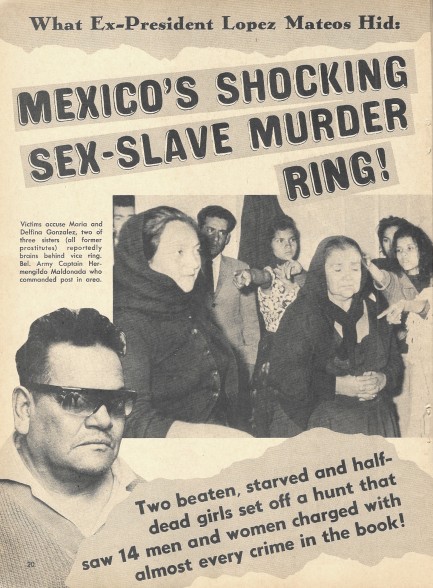
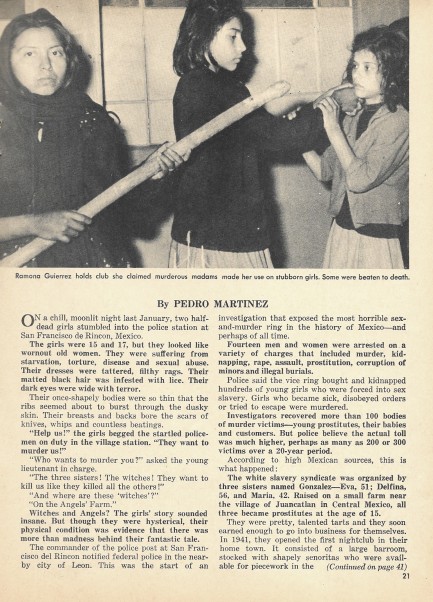
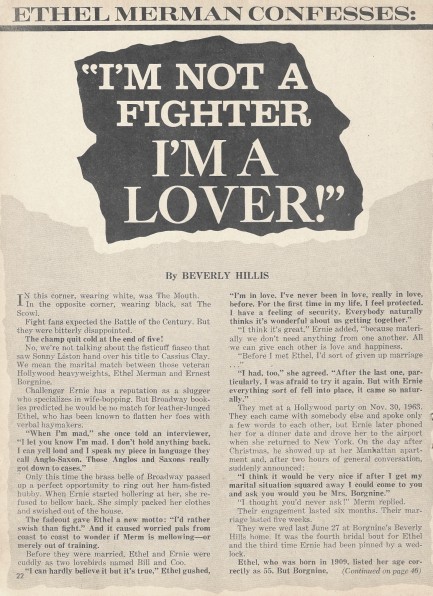
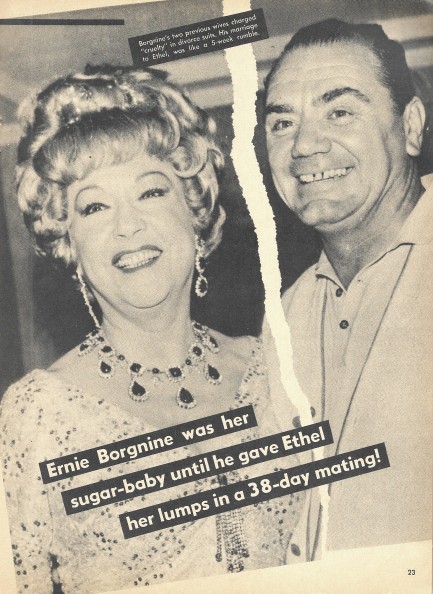
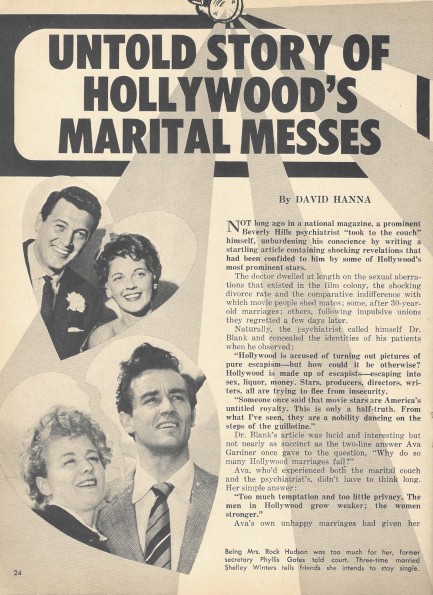
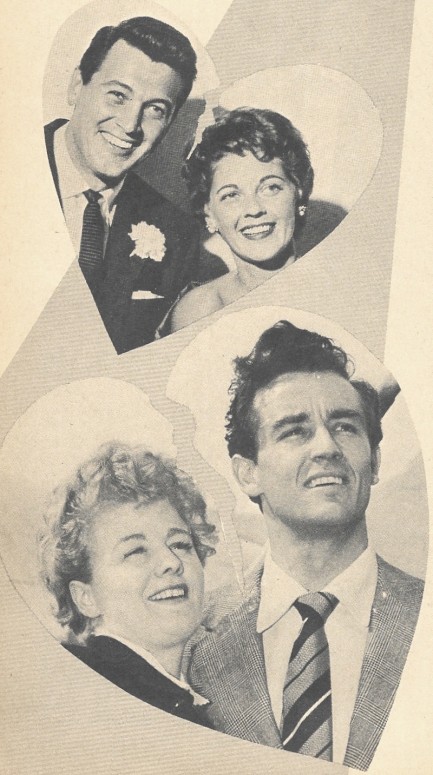
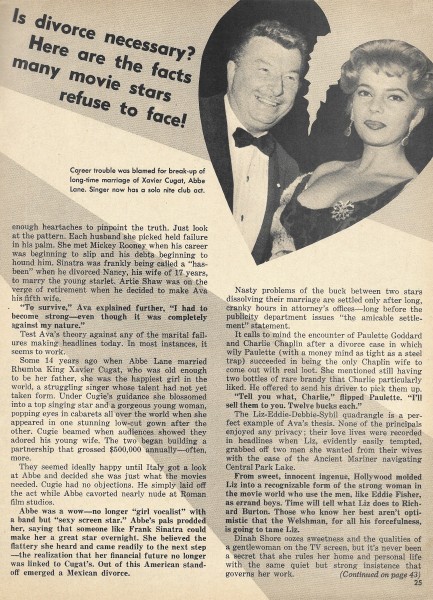
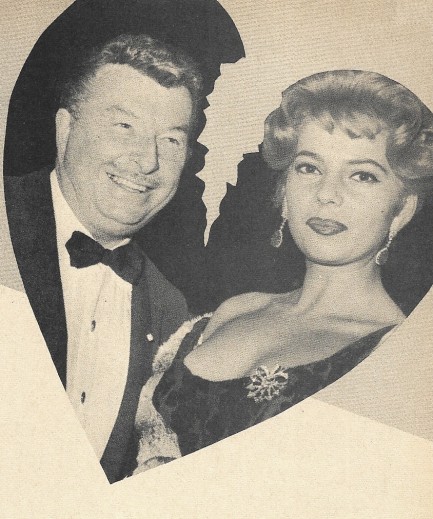
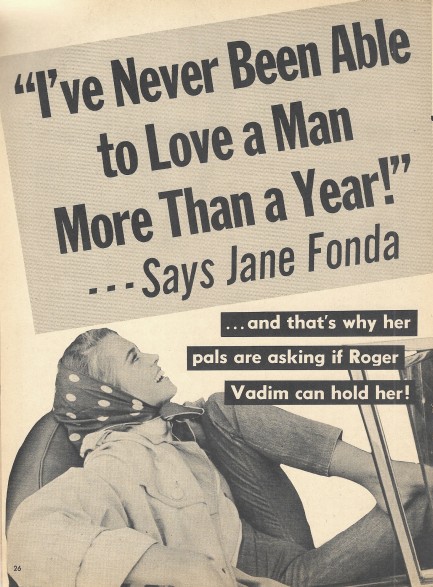
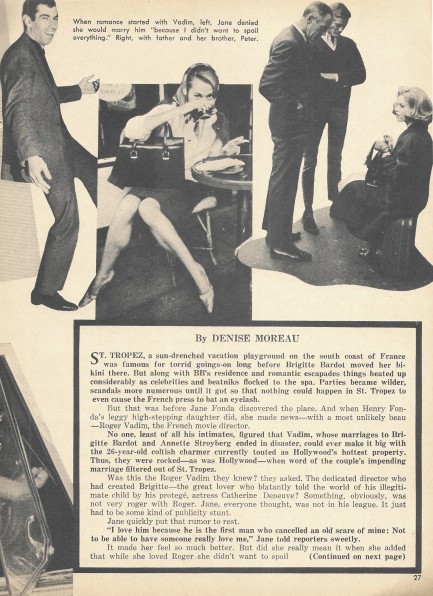
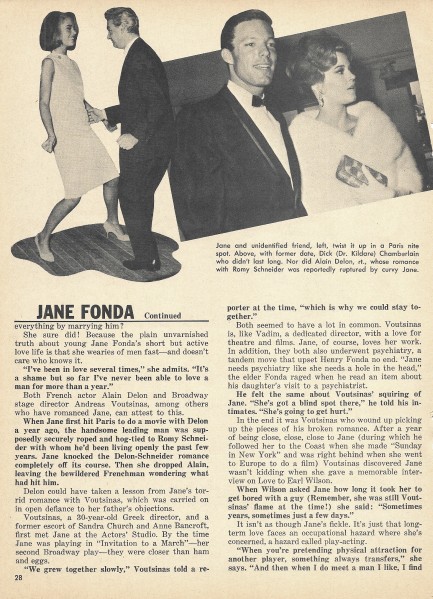
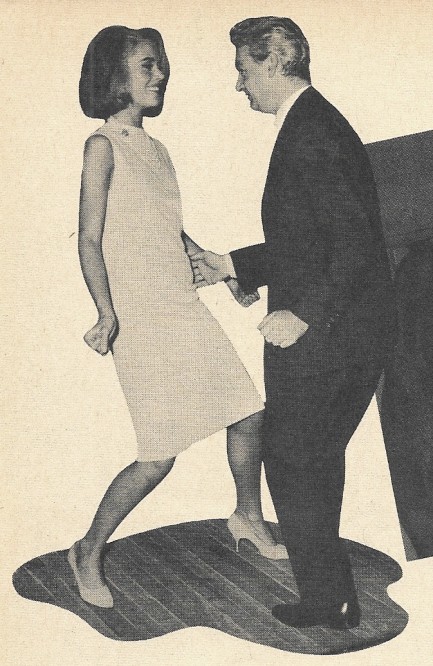
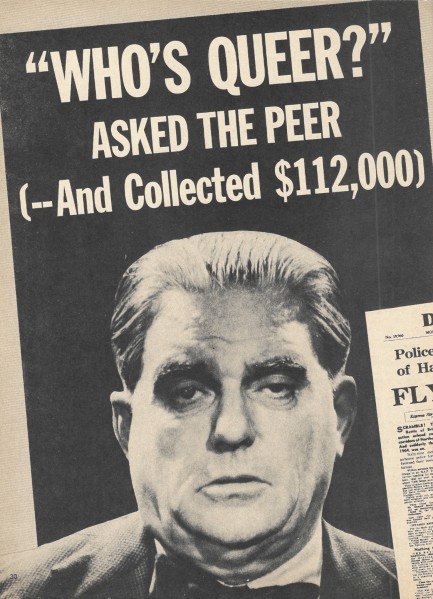
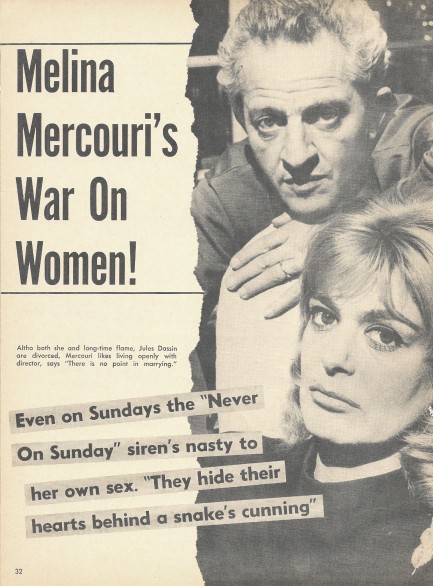
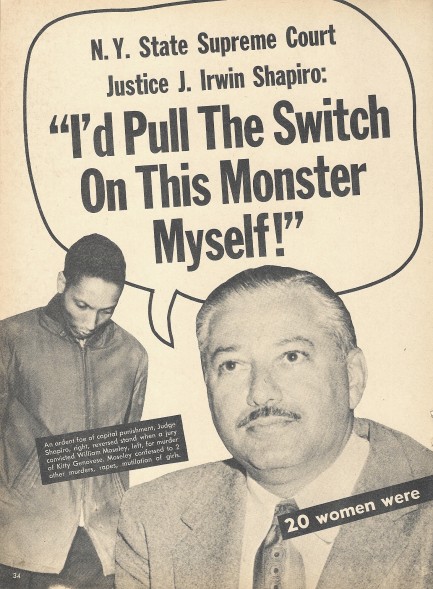
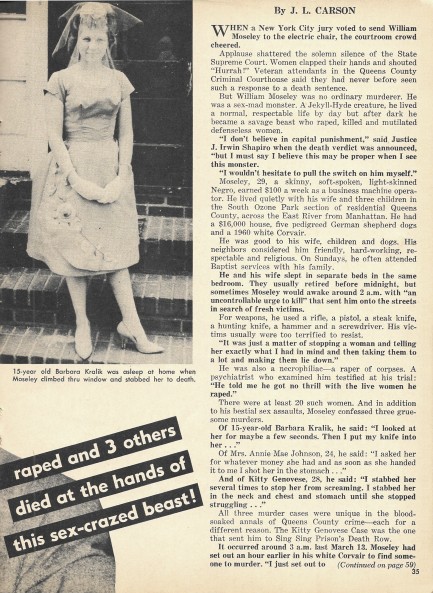
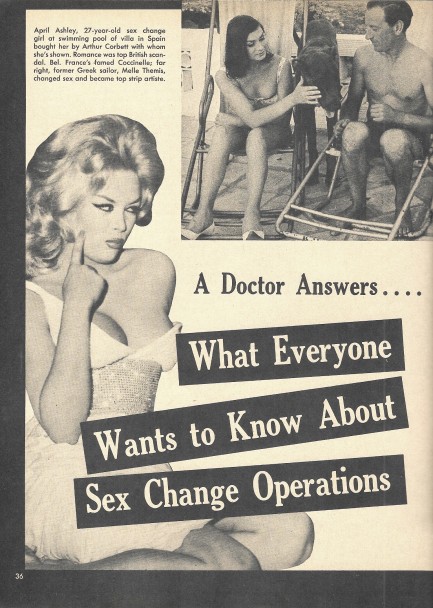
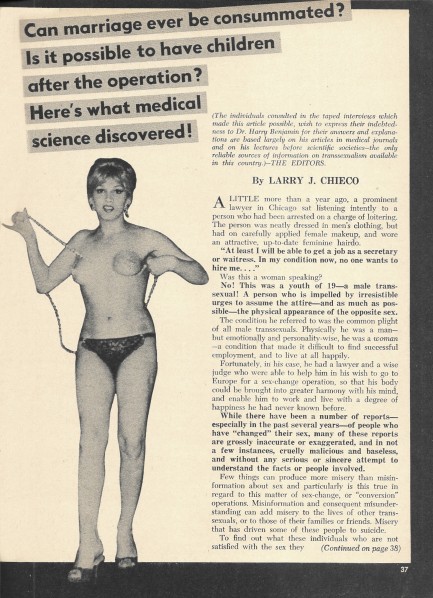
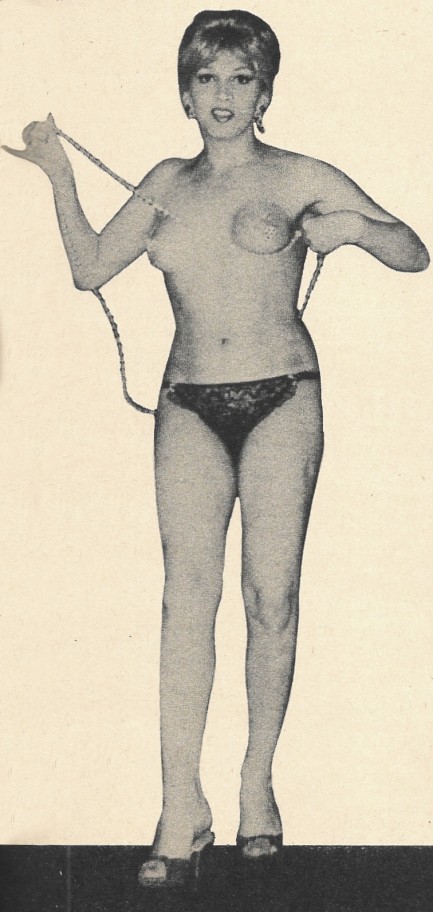
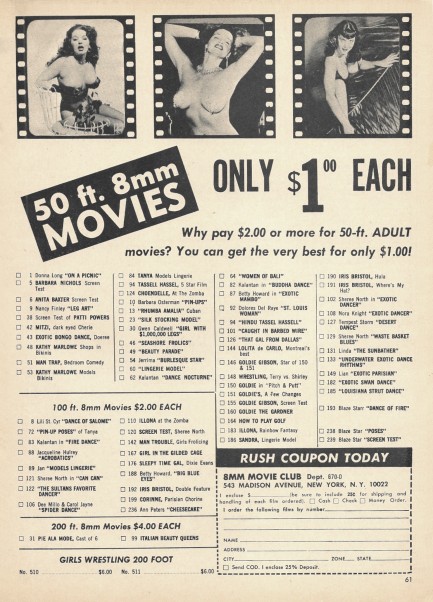
| Vintage Pulp | Jul 5 2020 |

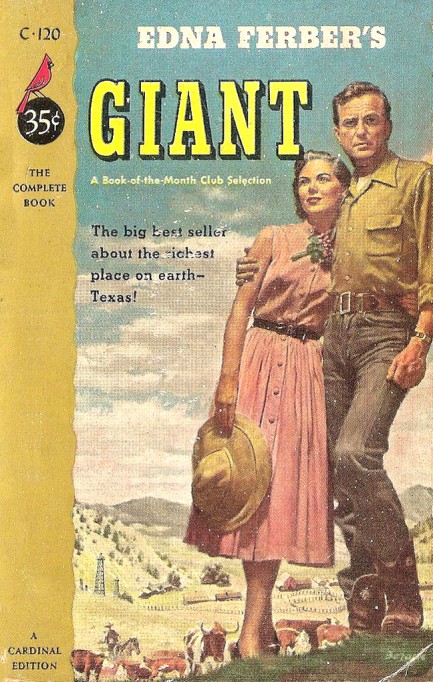
| Intl. Notebook | May 12 2020 |

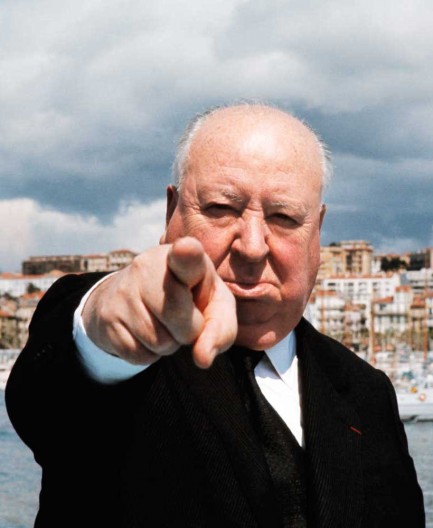
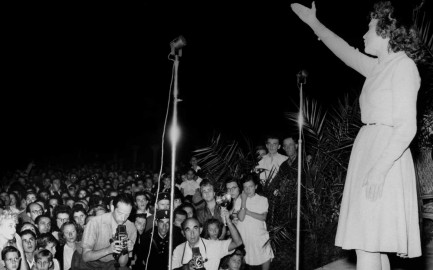
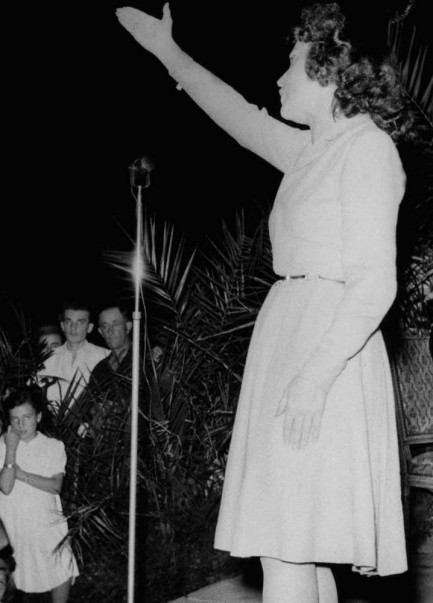 Edith Piaf sings on the terrace of the Carlton Hotel on the iconic Boulevard de la Croisette at the first Festival de Cannes to be held under that name, in 1946. Back then the event took place in September and October, but would shift to May a bit later.
Edith Piaf sings on the terrace of the Carlton Hotel on the iconic Boulevard de la Croisette at the first Festival de Cannes to be held under that name, in 1946. Back then the event took place in September and October, but would shift to May a bit later.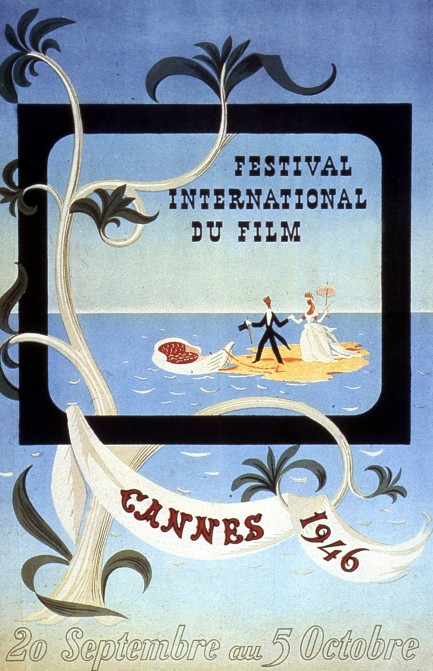
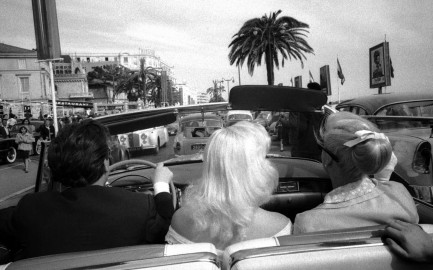 Diana Dors and Ginger Rogers arrive at the fest the only way anyone should—breezing along the beachfront in a convertible, in 1956, with an unknown driver.
Diana Dors and Ginger Rogers arrive at the fest the only way anyone should—breezing along the beachfront in a convertible, in 1956, with an unknown driver.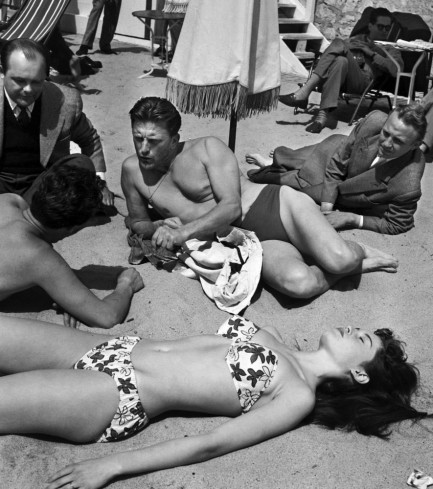 Kirk Douglas holds court on the beach in 1953, and Brigitte Bardot soaks up rays in the foreground.
Kirk Douglas holds court on the beach in 1953, and Brigitte Bardot soaks up rays in the foreground.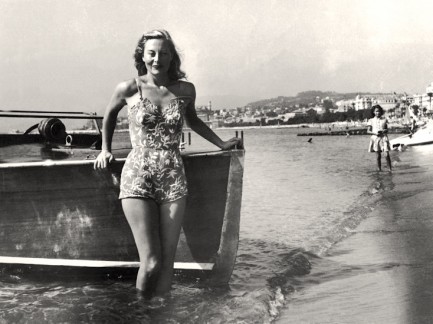 Michele Morgan poses at the first Festival in 1946. Photo ops of this sort were essential sources of publicity for stars, and would soon become opportunities for non-stars seeking to be discovered.
Michele Morgan poses at the first Festival in 1946. Photo ops of this sort were essential sources of publicity for stars, and would soon become opportunities for non-stars seeking to be discovered.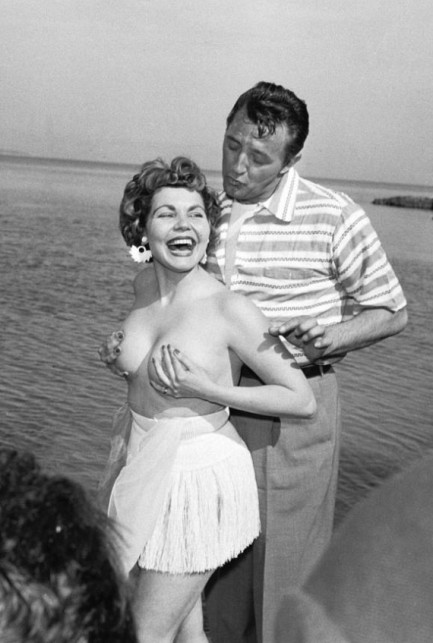 Case in point. Robert Mitchum poses with actress Simone Sylva in 1954. Sylva was allegedly not supposed to be there, but shucked her top and photo-bombed Douglas in an attempt to raise her profile. It didn't work. She made only a couple of credited movie appearances after her topless stunt.
Case in point. Robert Mitchum poses with actress Simone Sylva in 1954. Sylva was allegedly not supposed to be there, but shucked her top and photo-bombed Douglas in an attempt to raise her profile. It didn't work. She made only a couple of credited movie appearances after her topless stunt.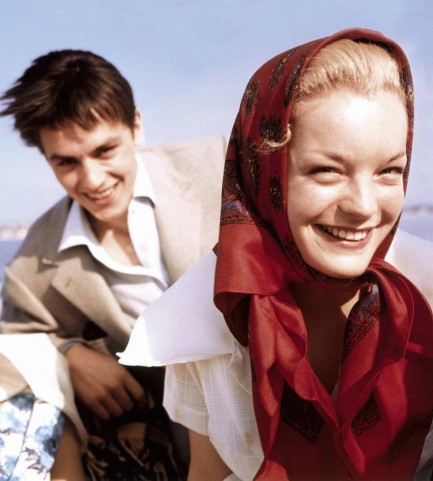 Romy Schneider and Alain Delon at the 1959 fest.
Romy Schneider and Alain Delon at the 1959 fest.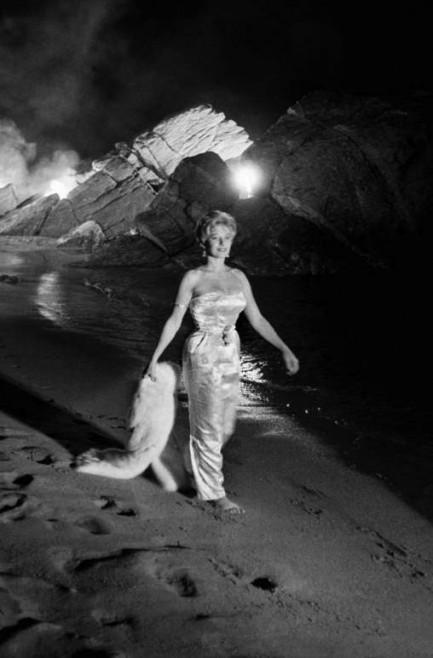 An unidentified model or actress poses in the style of Anita Ekberg from La dolce vita in 1960. This looks like it was shot at Plage du Midi, which is a beach located a little ways west of the Cannes town center.
An unidentified model or actress poses in the style of Anita Ekberg from La dolce vita in 1960. This looks like it was shot at Plage du Midi, which is a beach located a little ways west of the Cannes town center. A unidentified partygoer is tossed into a swimming pool after La Dolce Vita won the the 1960 Palme d’Or. The Festival is almost as well known for legendary parties as for legendary film premieres.
A unidentified partygoer is tossed into a swimming pool after La Dolce Vita won the the 1960 Palme d’Or. The Festival is almost as well known for legendary parties as for legendary film premieres.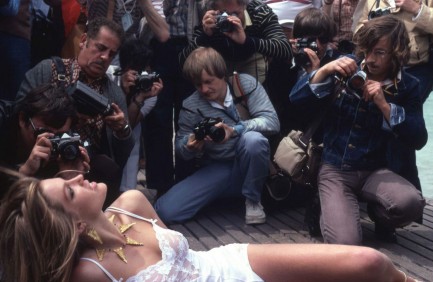
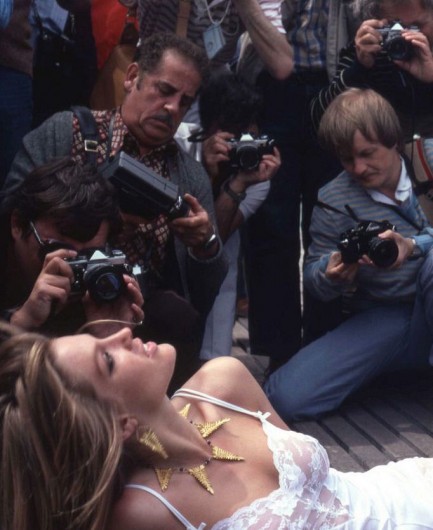 Another unidentified model or actress poses on the boardwalk in 1979. Generally, you don't have to be known to draw a crowd of photographers—you just have to be nearly bare. She's wearing lingerie, so that explains the interest, though this is modest garb for a Cannes publicity stunt. It's never a surprise to see a headline-seeking film hopeful strip all the way down to a string ficelle féminin, or thong, which is the limit of what is legal in Cannes
Another unidentified model or actress poses on the boardwalk in 1979. Generally, you don't have to be known to draw a crowd of photographers—you just have to be nearly bare. She's wearing lingerie, so that explains the interest, though this is modest garb for a Cannes publicity stunt. It's never a surprise to see a headline-seeking film hopeful strip all the way down to a string ficelle féminin, or thong, which is the limit of what is legal in Cannes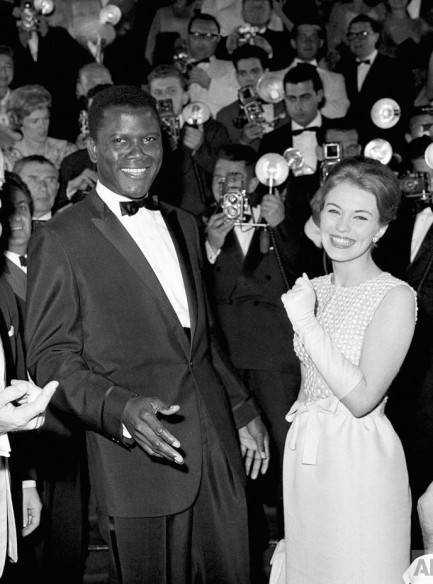 Sidney Poitier and Jean Seberg have a laugh in 1961. This was the year Poitier's flick Paris Blues was released, so it's possible he had jetted down from the capital for the Festival.
Sidney Poitier and Jean Seberg have a laugh in 1961. This was the year Poitier's flick Paris Blues was released, so it's possible he had jetted down from the capital for the Festival.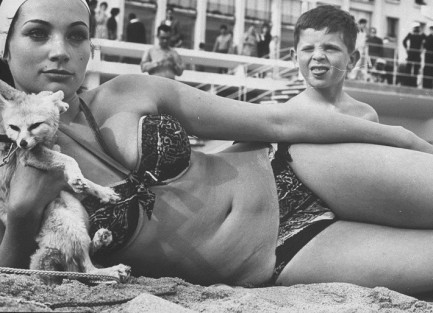 Philomène Toulouse relaxes on the sand in 1962 while a boy practices the classic French look of disgust he'll be using the rest of his life.
Philomène Toulouse relaxes on the sand in 1962 while a boy practices the classic French look of disgust he'll be using the rest of his life.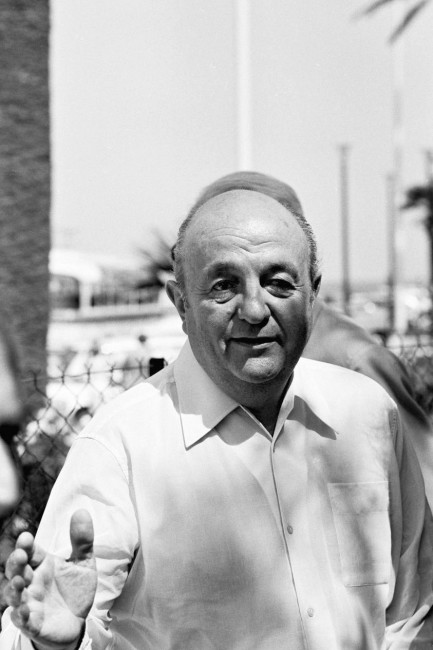 Actor Bernard Blier, 1975.
Actor Bernard Blier, 1975.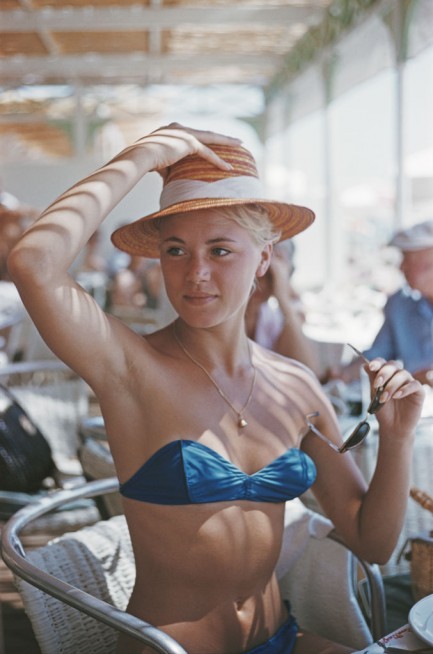 An unidentified bikini wearer boldly enjoys a lunch in a café on the Croisette, 1958.
An unidentified bikini wearer boldly enjoys a lunch in a café on the Croisette, 1958.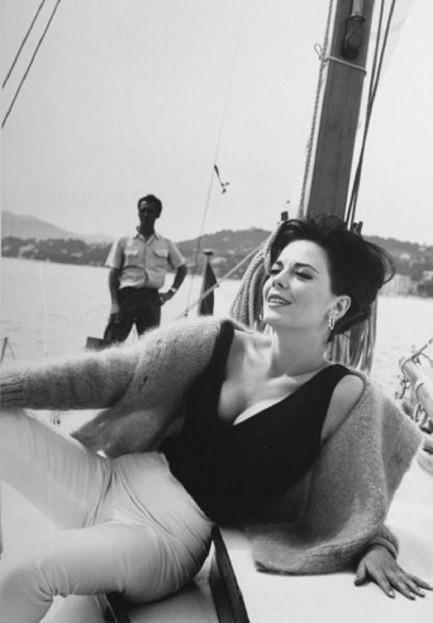 Natalie Wood aboard a sailboat in 1962.
Natalie Wood aboard a sailboat in 1962.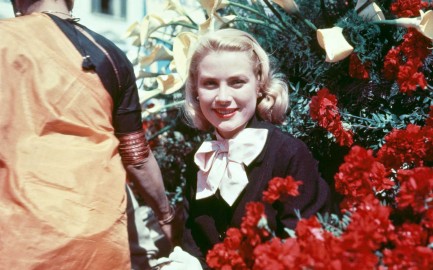
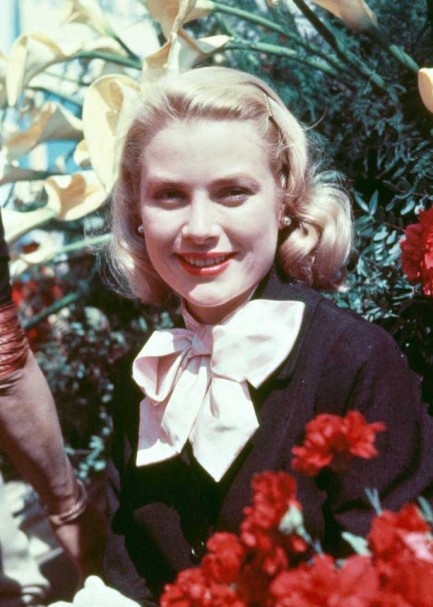 Grace Kelly, 1955.
Grace Kelly, 1955.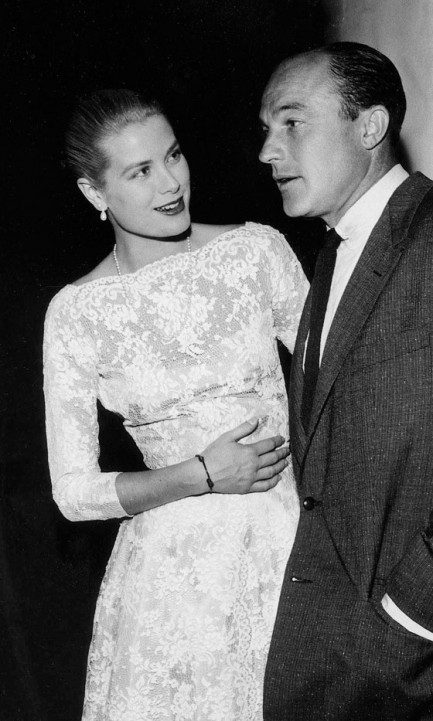 Kelly times two—Grace Kelly and Gene Kelly, hanging out, also in 1955.
Kelly times two—Grace Kelly and Gene Kelly, hanging out, also in 1955.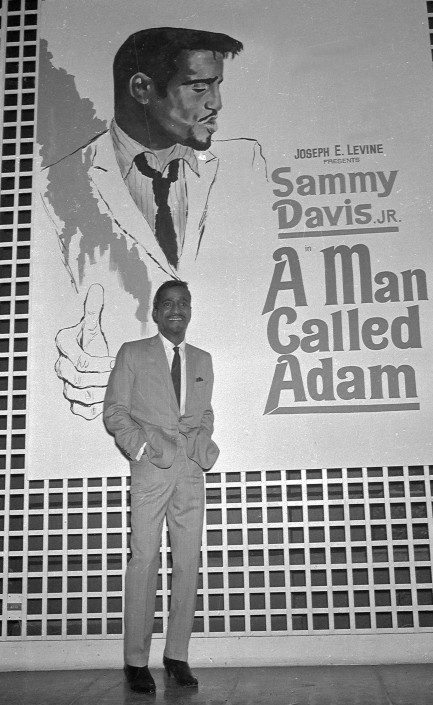 Sammy Davis, Jr. poses in front of a billboard promoting his film A Man Called Adam, 1966.
Sammy Davis, Jr. poses in front of a billboard promoting his film A Man Called Adam, 1966.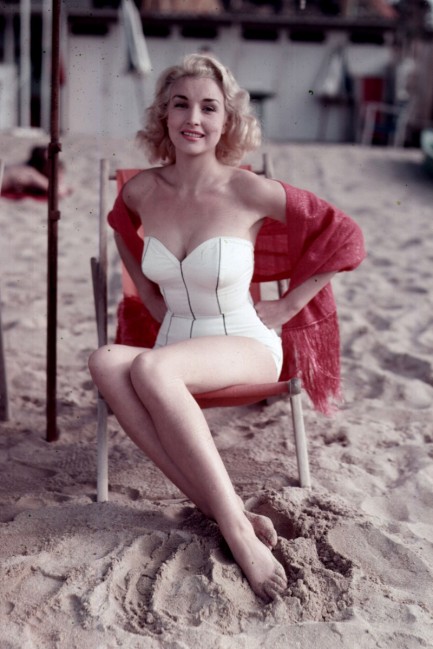 Joan Scott gets sand between her toes in 1955. Scott is obscure. She isn't even the most famous Joan Scott anymore. The IMDB entry for the only Joan Scott near the appropriate age is for an actress born in 1920 who didn't begin acting until 1967. The Joan Scott above doesn't look thirty-five, though, and we doubt she would have been the subject of this somewhat well-known photo without parlaying it into a film appearance before twelve years had passed. So we don't think this is the Joan Scott referenced on IMDB.
Joan Scott gets sand between her toes in 1955. Scott is obscure. She isn't even the most famous Joan Scott anymore. The IMDB entry for the only Joan Scott near the appropriate age is for an actress born in 1920 who didn't begin acting until 1967. The Joan Scott above doesn't look thirty-five, though, and we doubt she would have been the subject of this somewhat well-known photo without parlaying it into a film appearance before twelve years had passed. So we don't think this is the Joan Scott referenced on IMDB.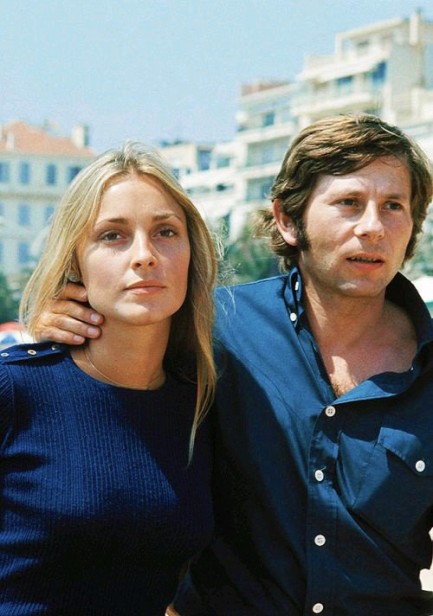
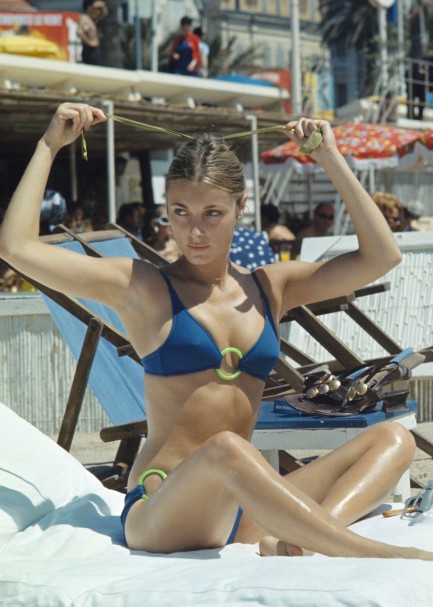 Sharon Tate, with Roman Polanski, and solo, 1968.
Sharon Tate, with Roman Polanski, and solo, 1968.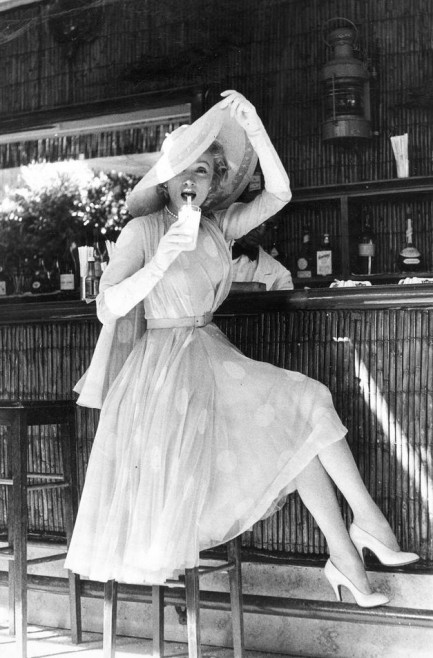 Marlene Dietrich brings glamour to a tiki themed bar in 1958.
Marlene Dietrich brings glamour to a tiki themed bar in 1958.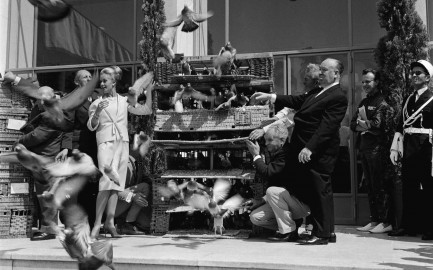
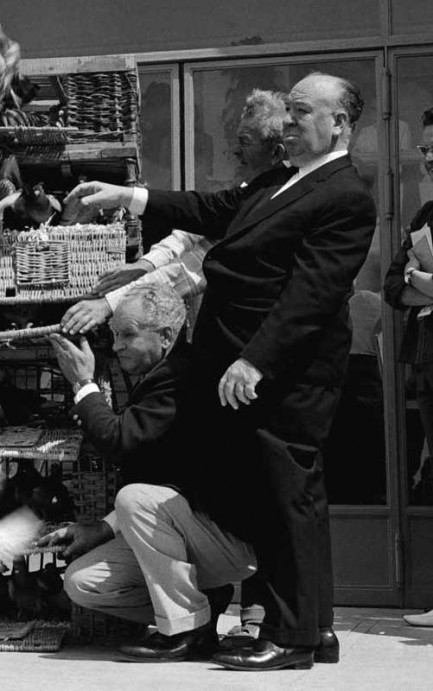 Tippi Hedren and Alfred Hitchcock release caged birds as a promo stunt for The Birds in 1963.
Tippi Hedren and Alfred Hitchcock release caged birds as a promo stunt for The Birds in 1963.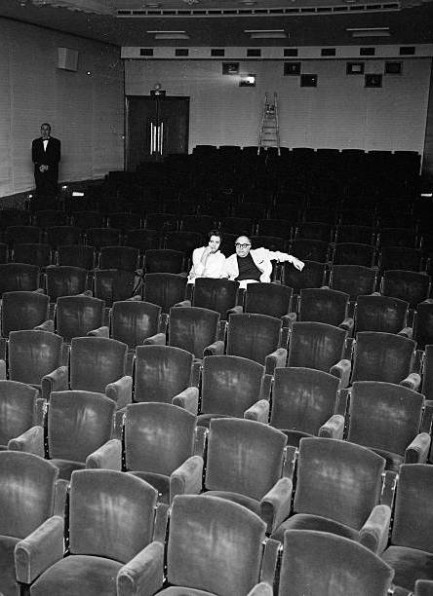 Sophia Loren sits with husband Carlo Ponti, who was a member of the 1966 Festival jury.
Sophia Loren sits with husband Carlo Ponti, who was a member of the 1966 Festival jury.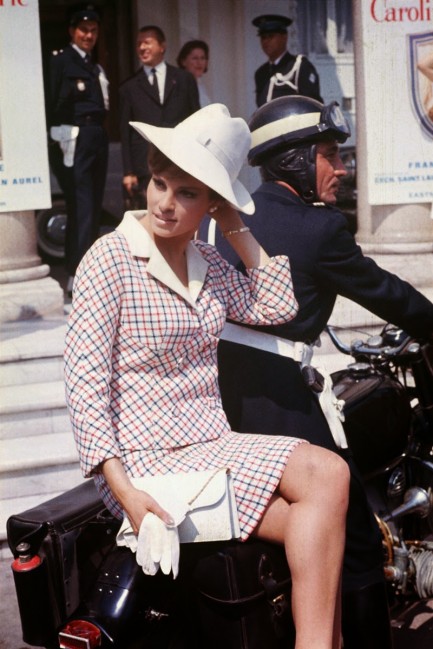 Raquel Welch poses on a motorcycle in 1966.
Raquel Welch poses on a motorcycle in 1966.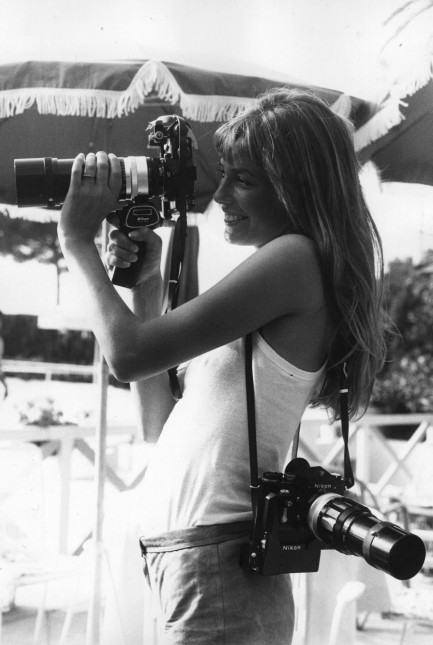 Jane Birkin takes aim with one of her cameras in 1975.
Jane Birkin takes aim with one of her cameras in 1975.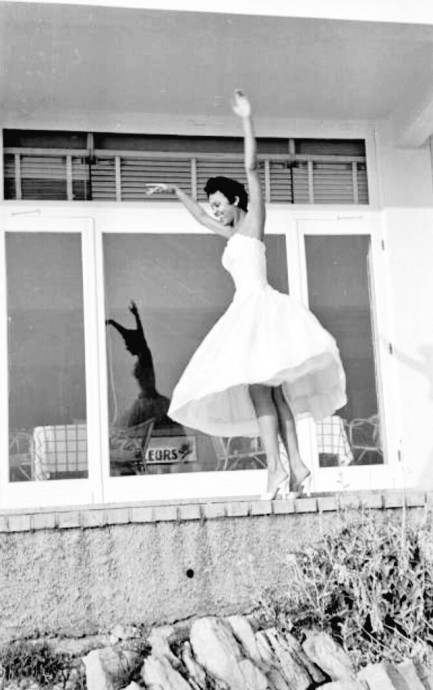 Dorothy Dandridge frolics in 1955, when she was promoting her film Carmen Jones.
Dorothy Dandridge frolics in 1955, when she was promoting her film Carmen Jones. Cinematic icon Catherine Deneuve and her sister Françoise Dorléac in 1965. Dorléac died in an automobile accident a couple of years later.
Cinematic icon Catherine Deneuve and her sister Françoise Dorléac in 1965. Dorléac died in an automobile accident a couple of years later.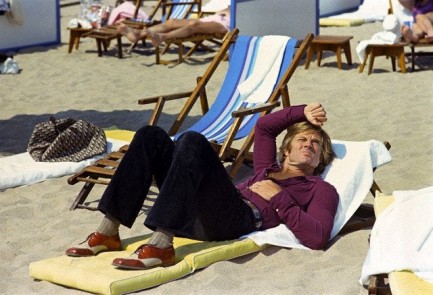 Robert Redford lounges on the beach in 1972. Based on his outfit you'd think he was in Cannes to promote The Sting, but he was actually there for his western Jeremiah Johnson, which screened May 7 of that year.
Robert Redford lounges on the beach in 1972. Based on his outfit you'd think he was in Cannes to promote The Sting, but he was actually there for his western Jeremiah Johnson, which screened May 7 of that year.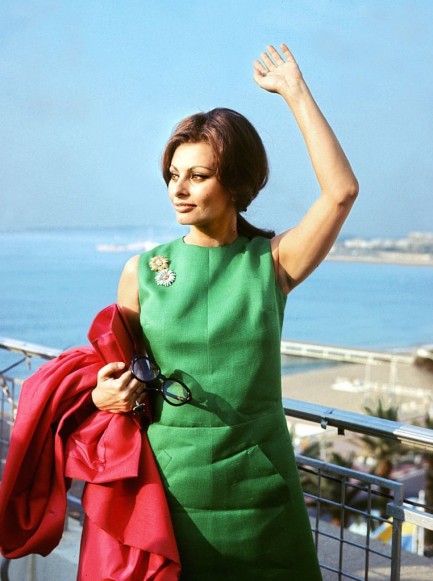 Sophia Loren waves to well-wishers in 1964.
Sophia Loren waves to well-wishers in 1964.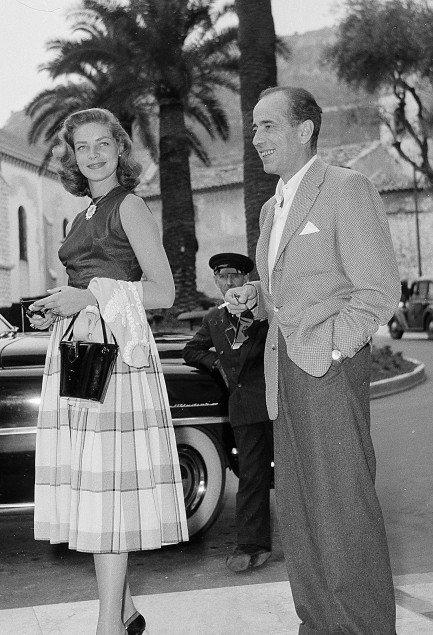 Bogie and Bacall paired up and looking distinguished in 1957.
Bogie and Bacall paired up and looking distinguished in 1957.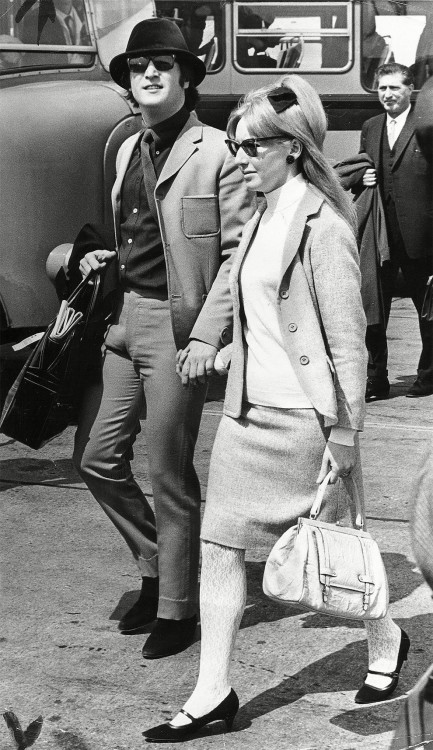
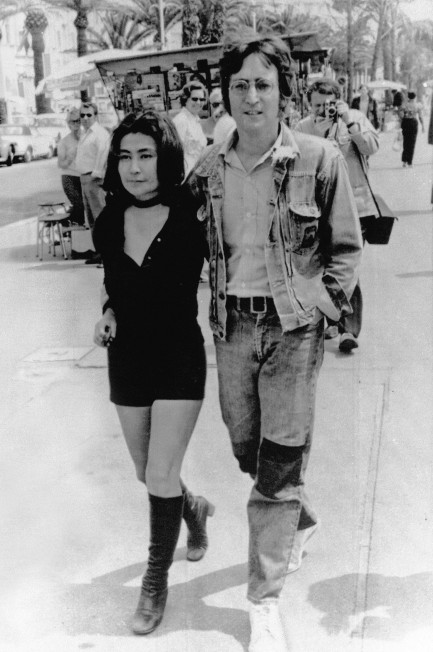 John and Cynthia Lennon in 1965, and John with Yoko Ono in 1971. Every story John told on that second trip probably started with, “When I was here with the first love of my life...” until Yoko smacked him across the mouth.
John and Cynthia Lennon in 1965, and John with Yoko Ono in 1971. Every story John told on that second trip probably started with, “When I was here with the first love of my life...” until Yoko smacked him across the mouth.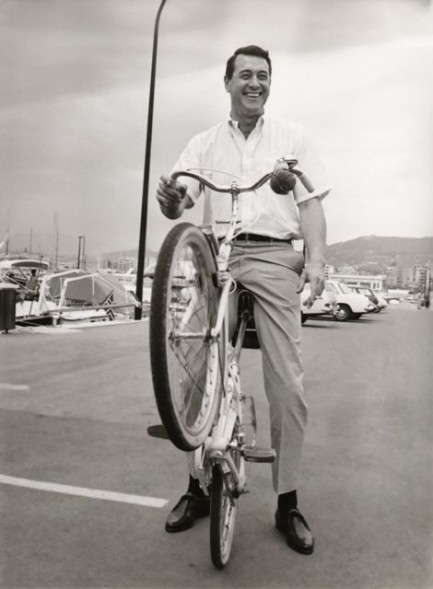 Rock Hudson and bicycle in 1966.
Rock Hudson and bicycle in 1966.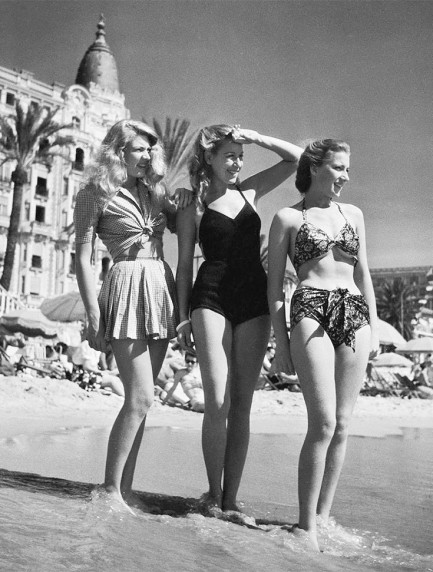 Unidentified actresses pose on the beach in 1947. To the rear is the Hotel Carlton, mentioned in the Edith Piaf image, built on the Croisette and finished in 1910.
Unidentified actresses pose on the beach in 1947. To the rear is the Hotel Carlton, mentioned in the Edith Piaf image, built on the Croisette and finished in 1910.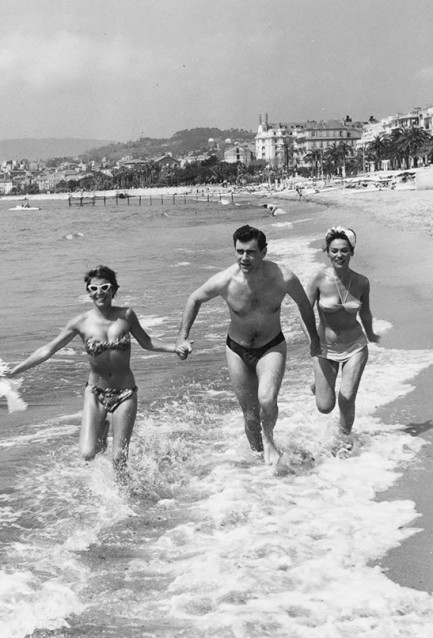 George Baker, Bella Darvi (right—your right, not his), and an unknown acquaintance have a surfside run/photo op in 1956.
George Baker, Bella Darvi (right—your right, not his), and an unknown acquaintance have a surfside run/photo op in 1956.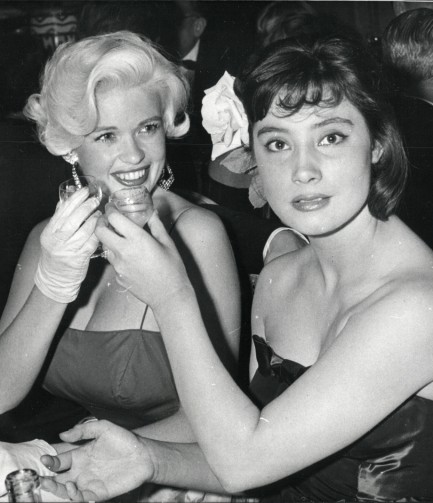 Jayne Mansfield and Russian actress Tatiana Samoïlova enjoy a toast in 1958. Mansfield probably shared the story of how she once made Sophia Loren stare at her boobs, and Samoïlova said, “Cheers to you—well played, you provocative American minx.”
Jayne Mansfield and Russian actress Tatiana Samoïlova enjoy a toast in 1958. Mansfield probably shared the story of how she once made Sophia Loren stare at her boobs, and Samoïlova said, “Cheers to you—well played, you provocative American minx.”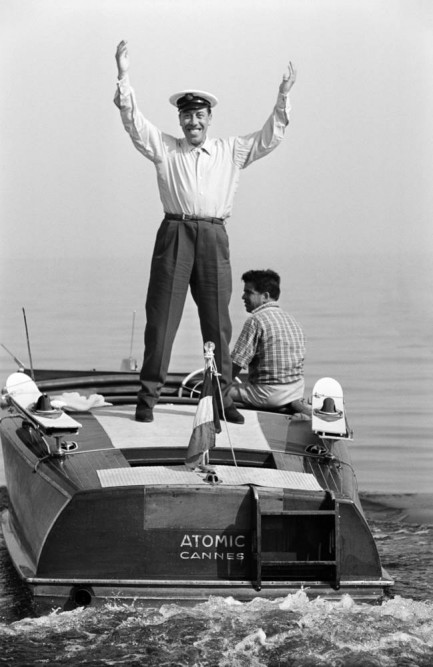 French actor Fernandel, whose real name was Fernand Contandin, on his boat Atomic in 1956.
French actor Fernandel, whose real name was Fernand Contandin, on his boat Atomic in 1956.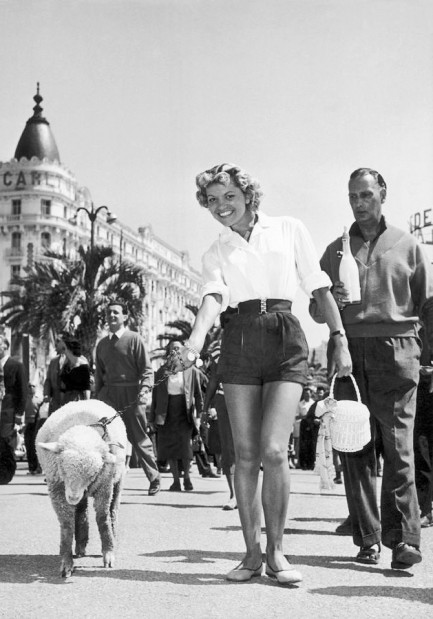 Arlette Patrick figures out a different way to generate publicity—by walking her sheep on the Croisette in 1955.
Arlette Patrick figures out a different way to generate publicity—by walking her sheep on the Croisette in 1955. A pair of water skiers show perfect form in 1955, as a battleship floats in the background.
A pair of water skiers show perfect form in 1955, as a battleship floats in the background.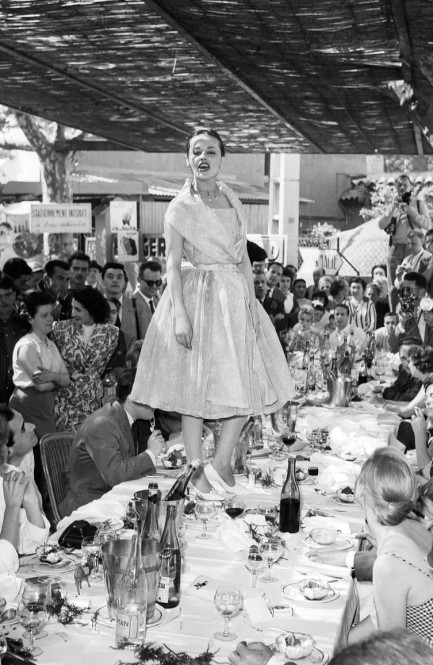 Jeanne Moreau, for reasons that are unclear, poses on a banquet table in 1958. Most sources descibe this in such a way as to make it seem spontaneous, but we have our doubts. It's a great shot, though.
Jeanne Moreau, for reasons that are unclear, poses on a banquet table in 1958. Most sources descibe this in such a way as to make it seem spontaneous, but we have our doubts. It's a great shot, though.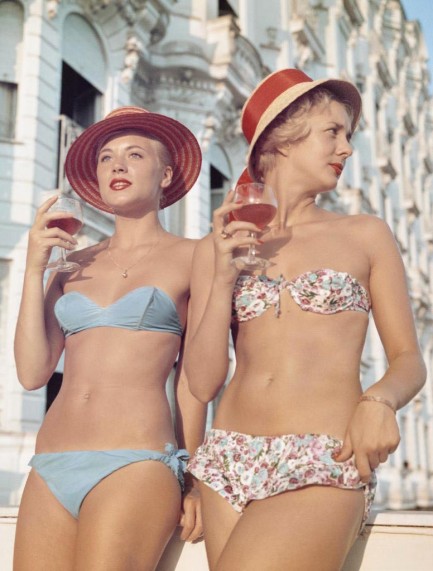 Two unidentified women take in the scene from the terrace of the Hotel Carlton, 1958. This shot is usually said to portray two tourists, but the woman on the left is the same person as in the bikini lunch shot from earlier, which tells us she's a model or actress, and both photos are staged. Like we said, publicity is everything in Cannes.
Two unidentified women take in the scene from the terrace of the Hotel Carlton, 1958. This shot is usually said to portray two tourists, but the woman on the left is the same person as in the bikini lunch shot from earlier, which tells us she's a model or actress, and both photos are staged. Like we said, publicity is everything in Cannes.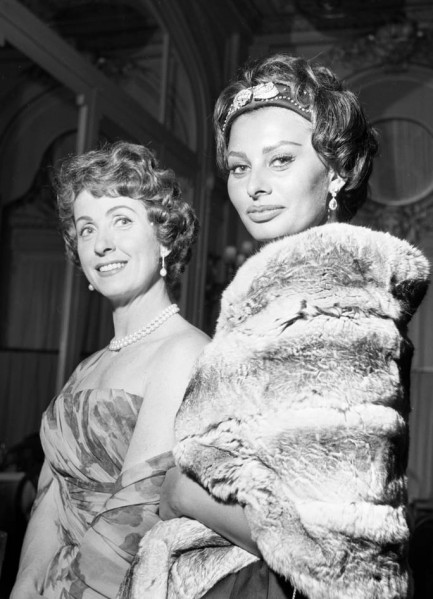
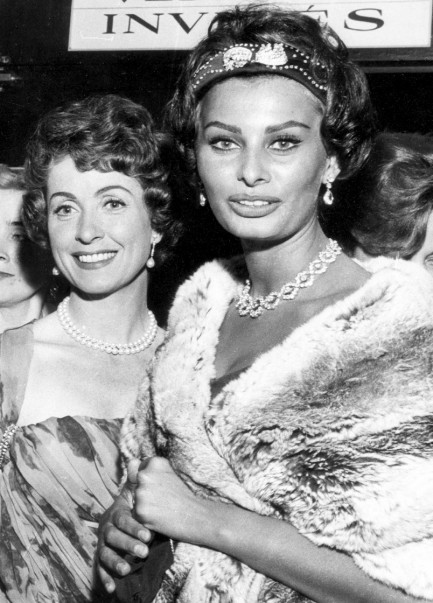 Danielle Darrieux and Sophia Loren at the 11th Cannes Film Festival, 1958.
Danielle Darrieux and Sophia Loren at the 11th Cannes Film Festival, 1958.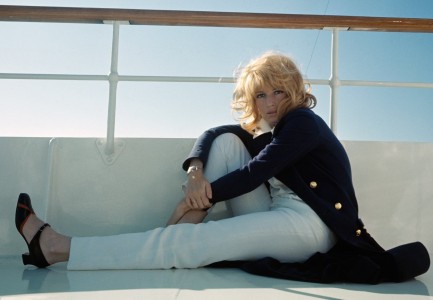 Italian actress Monica Vitti chills on a boat in 1968.
Italian actress Monica Vitti chills on a boat in 1968.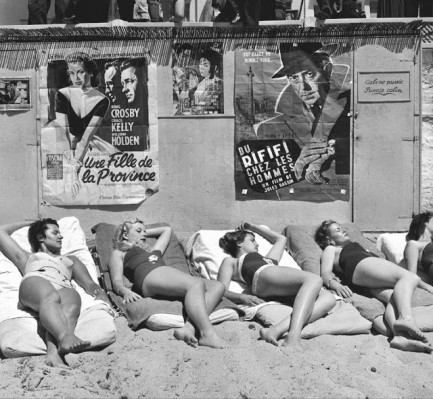 Aspiring stars catch some rays on the Croisette beach in 1955. The two large posters behind them are for The Country Girl with Grace Kelly, and Jules Dassin's Du rififi chez les hommes, both below.
Aspiring stars catch some rays on the Croisette beach in 1955. The two large posters behind them are for The Country Girl with Grace Kelly, and Jules Dassin's Du rififi chez les hommes, both below.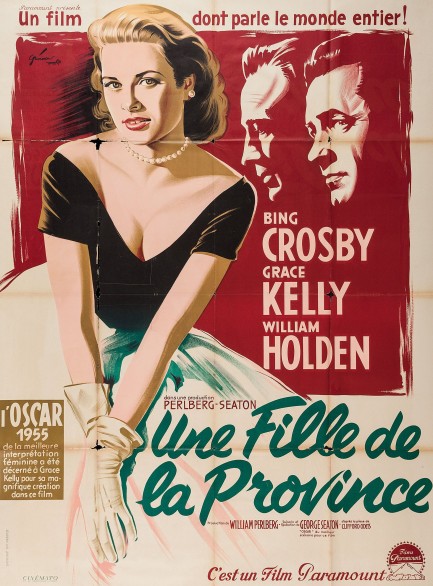
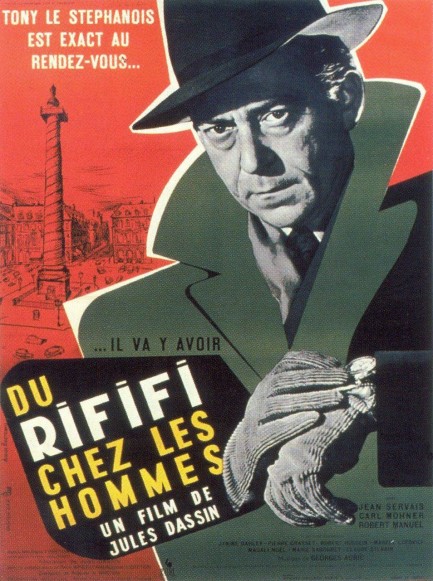
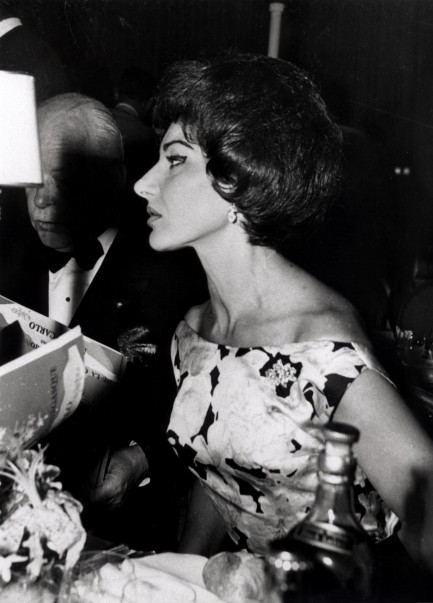 The renowned opera singer Maria Callas, 1960.
The renowned opera singer Maria Callas, 1960.| Vintage Pulp | May 25 2019 |

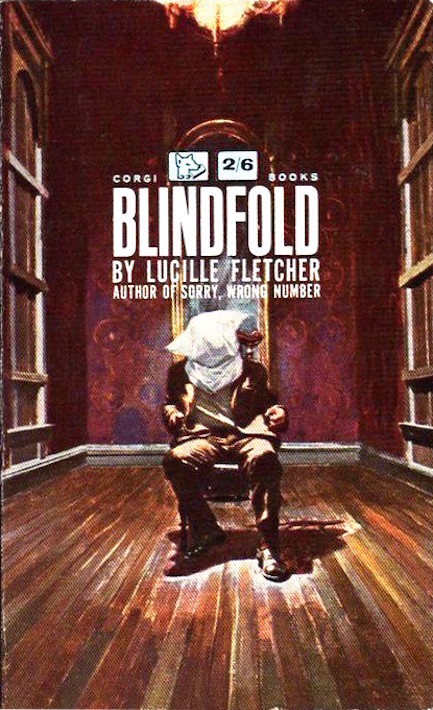
| Vintage Pulp | May 25 2019 |

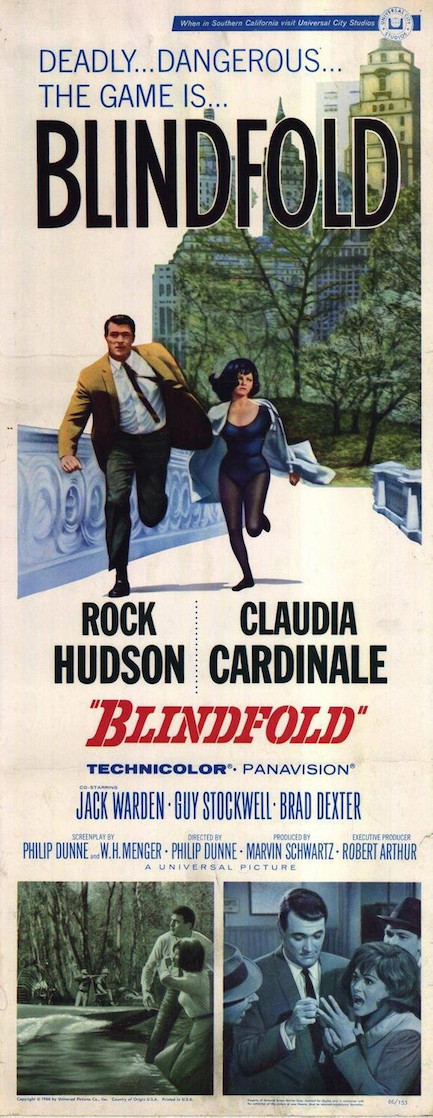
As in the novel this is the central gimmick, and it seems an impossible task, but Cardinale convinces Hudson he can find this isolated house. Obviously, this section is handled in less detail than in the novel. Hudson estimates how long the flight was, eliminating impossible flight plans, learns where migrating geese fly south, and remembers what he heard during the car journeys—a body of water, a rickety bridge, a strange type of boat, and a church choir. It was a fun idea in the book and it's a fun idea on the screen too. In fact, it must have made an impression, because aspects of it were directly borrowed by Robert Redford for his 1992 comedic thriller Sneakers. Hudson and Cardinale, first as adversaries and later as budding romantic partners, try to unravel the where what why when and who, while shamelessly flirting with each other. As we said in the previous post, think of Charade or Arabesque. Blindfold isn't executed as well as those films, but it's certainly a nice little trifle, and it's worth watching. Anything with Cardinale is. And Rock ain't so bad either. The film premiered in the U.S. today in 1966.
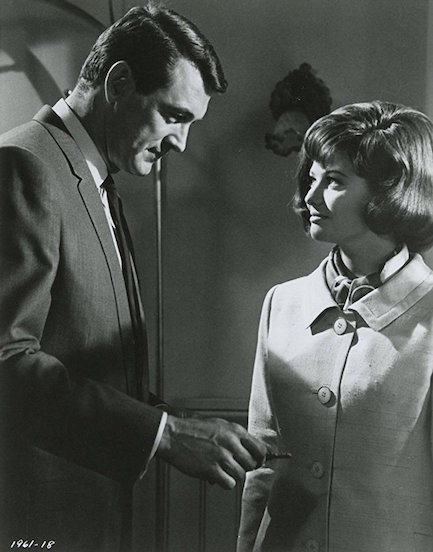
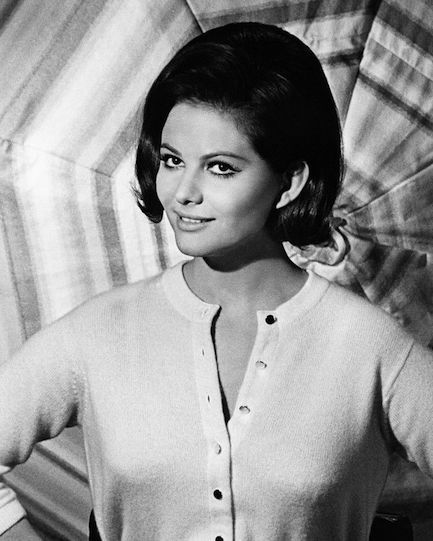
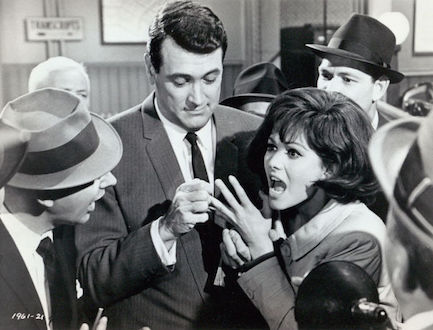
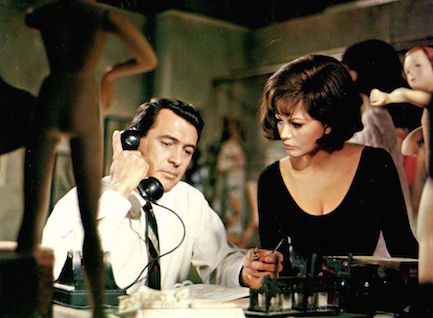
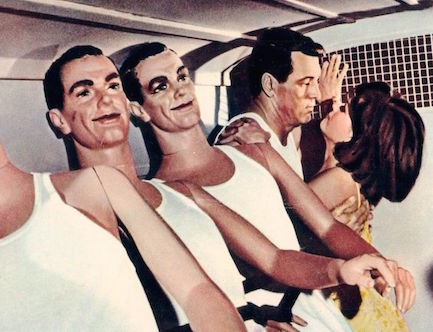
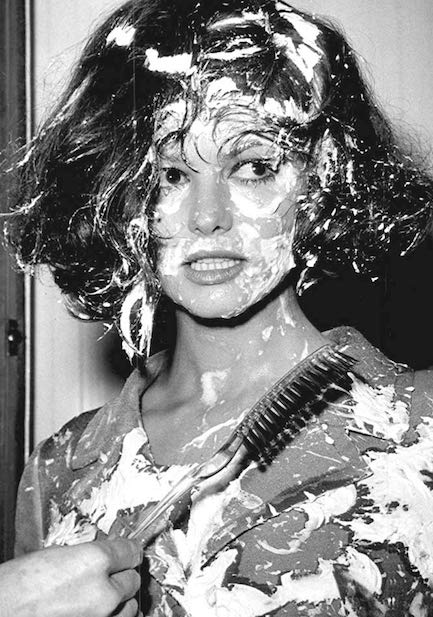
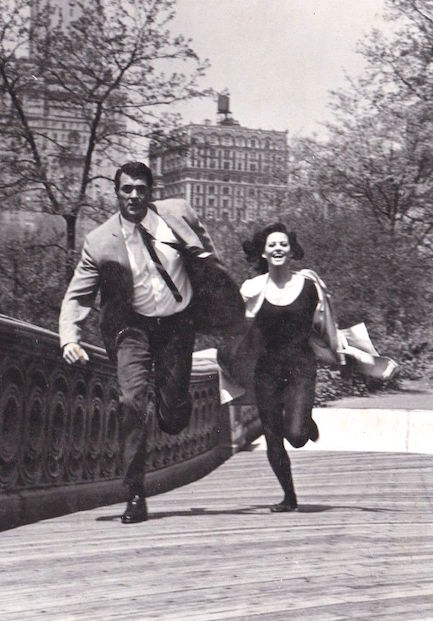
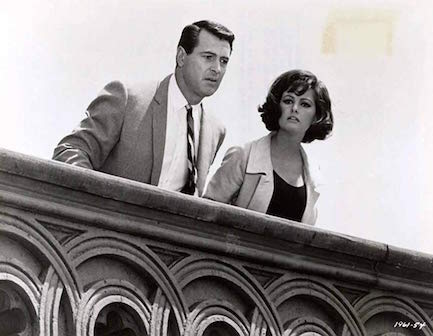
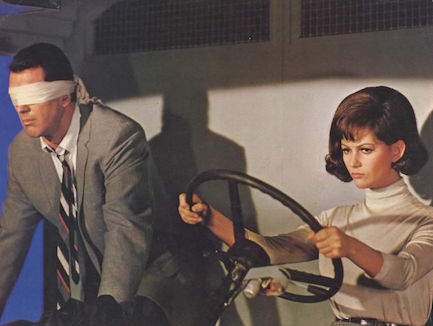
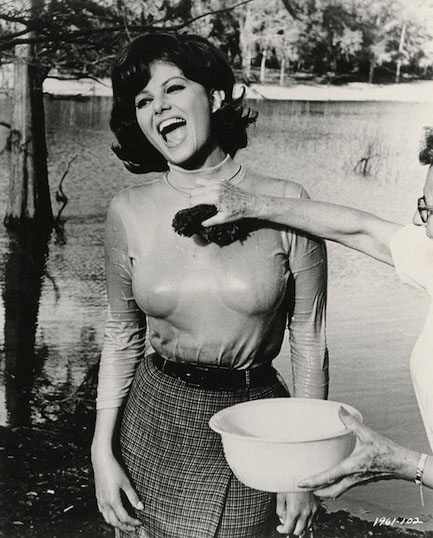
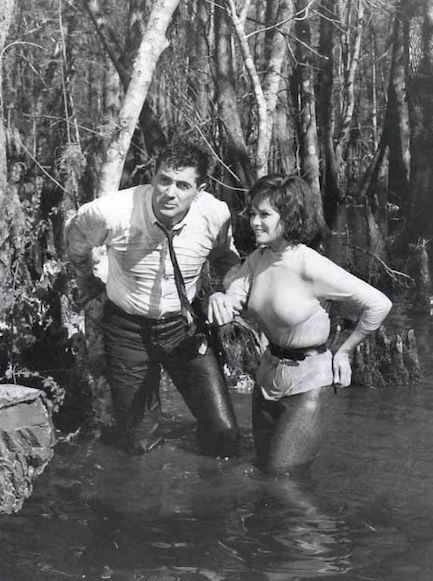
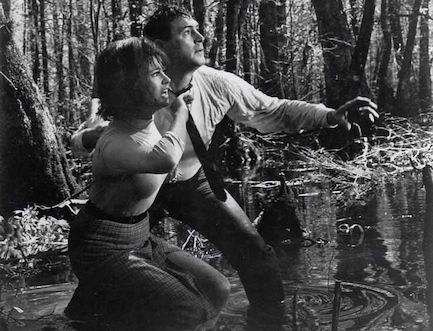
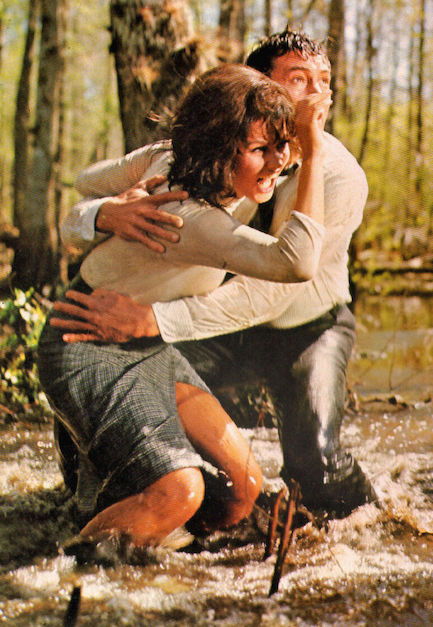
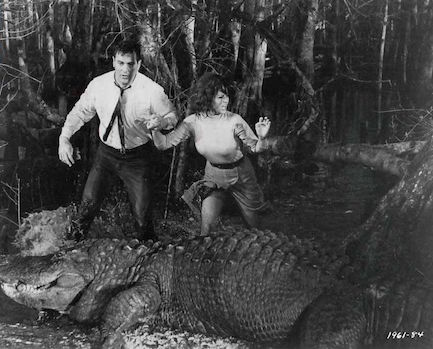
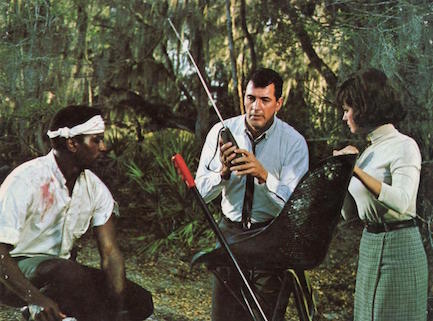
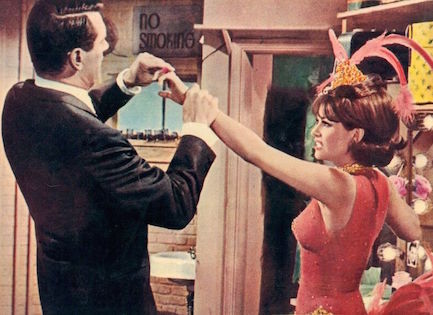
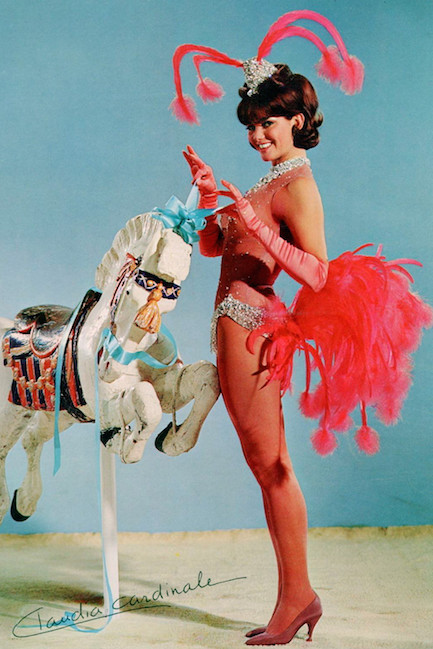
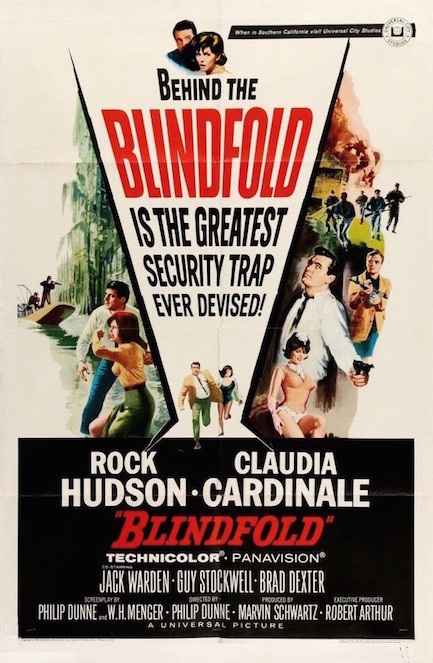
| Vintage Pulp | Apr 18 2018 |

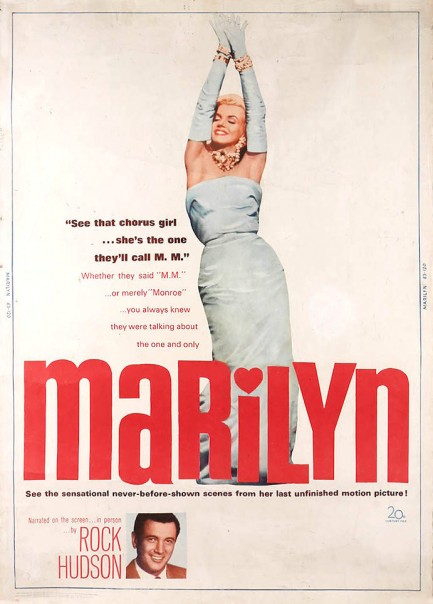
| Femmes Fatales | Feb 22 2018 |

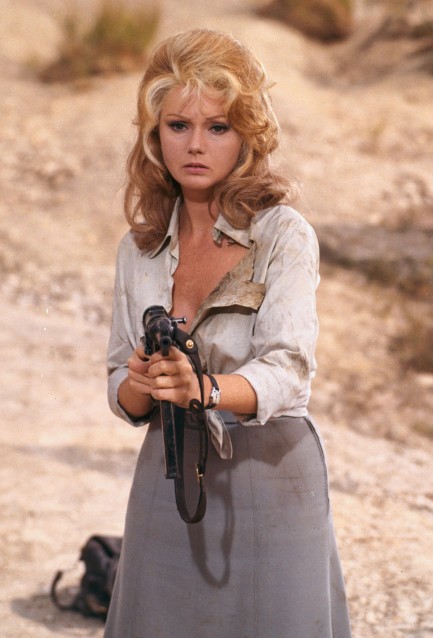
| Modern Pulp | Oct 8 2016 |

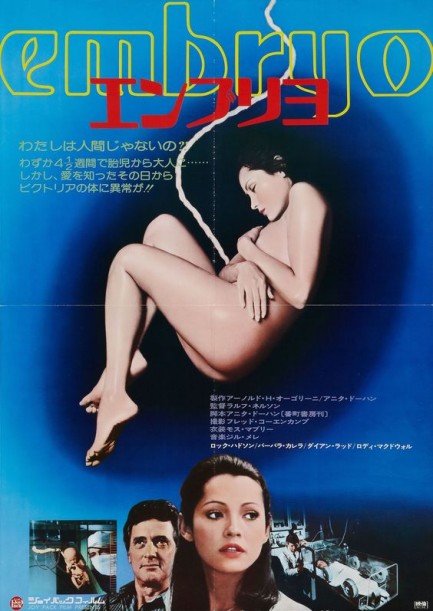
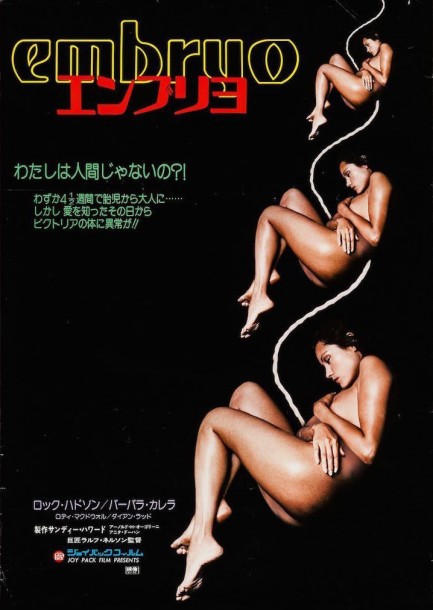
These two pretty posters were made to promote the sci-fi movie Embryo. It hit cinemas stateside in 1976 but didn't reach Japan until today in 1977. Based on a 1976 novel by Louis Charbonneau, what you get here is a research biologist, played by Rock Hudson, who in classic mad scientist style learns he can accelerate gestation and decides to experiment on humans. He acquires an early stage fetus and dumps it in his magic tank. In hours it's born, in days it's a child, and in short order it's Barbara Carrera. So he's the smartest scientist who's ever lived. At least until one figures out how to create a test tube Elke Sommer. Carrera is super beautiful and super smart, but has one big problem. Can you guess what it is? We'll give you a hint—if you think too long she might be dead before you answer. The threat of early death will throw anyone for a loop so we'll forgive poor Barbara her transgressions. She dances naked—and that's worth all the forgiveness in the world.
| Hollywoodland | Sex Files | Feb 17 2012 |

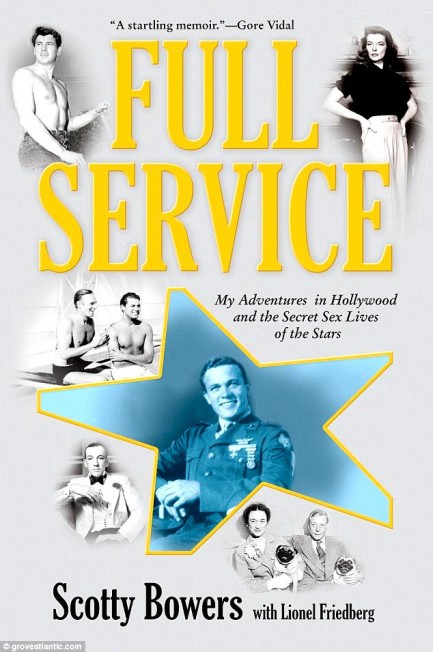
Every year, a raft of Hollywood tell-alls hits the newsstands, all claiming to be filled with juicy revelations, with only a scant few actually delivering on that promise. Scotty Bowers' newly published Tinseltown memoir Full Service falls into the latter group. We think it's destined to be one of the most remembered show business memoirs ever written.
Bowers was a World War II vet-turned-bartender who arrived in Hollywood in 1946 and quickly found that his striking looks opened doors for him. Those doors allegedly led to the bedrooms of such varied personages as Edith Piaf, Spencer Tracy, Cary Grant, Vivien Leigh, and the Duke of Windsor.
Bowers soon became known on the Hollywood fast track as a guy who could arrange trysts for stars too cautious or too shy to manage it themselves, and located sexual partners for Vincent Price, Katherine Hepburn, Rock Hudson and scores of others. Some of his claims are just jawdropping. Among them: he says he procured about 150 women for Katherine Hepburn, had threesomes with Cary Grant and Randolph Scott, and learned Spencer Tracy was bi-sexual only when, in a drunken stupor, the star "began nibbling on my foreskin."
There's always a degree of scepticism aroused by books like these, but Full Service dovetails with rumors that have been floating around Hollywood for decades, and has been endorsed by Gore Vidal, who claims to have been privvy to much of what Bowers describes and has called the book "as revelation filled as Hollywood Babylon." Predictably, the relatives of some of the stars mentioned in the book are not happy with its content, but Bowers steers clear of any true libel and probably can't be sued. As to why it took him so long to reveal his many secrets, he said in an interview with the New York Times, "I'm not getting any younger and all my famous tricks are dead by now. The truth can't hurt them anymore."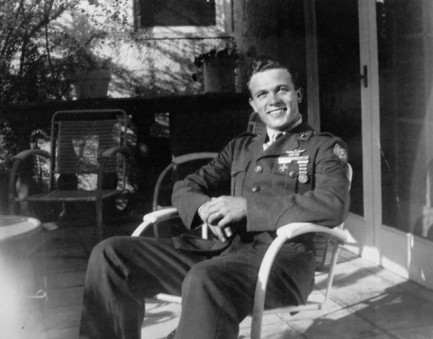
| Vintage Pulp | Oct 4 2011 |

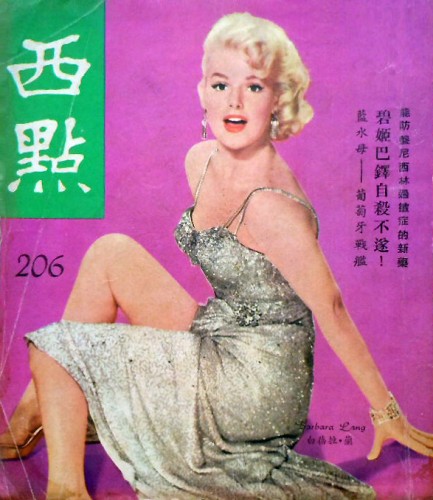

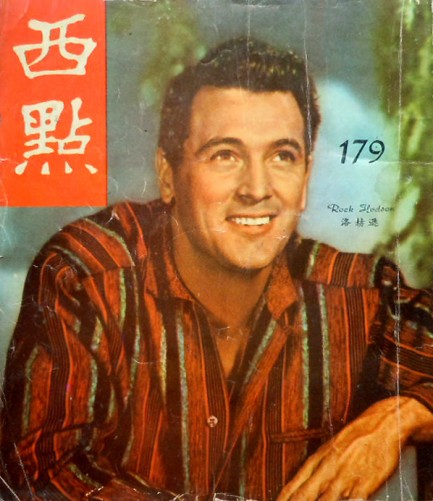
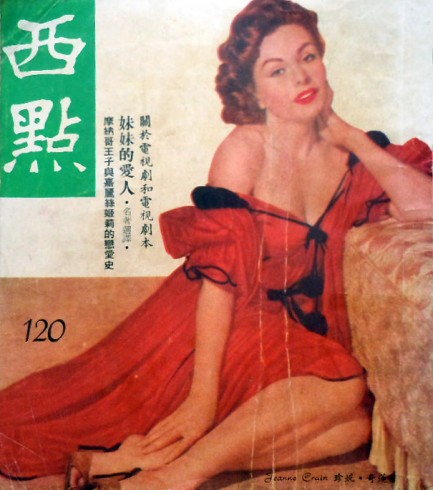
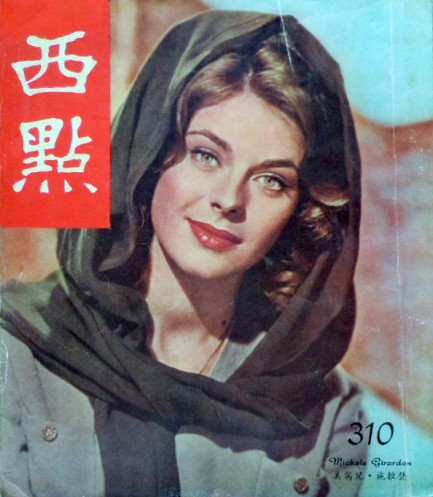
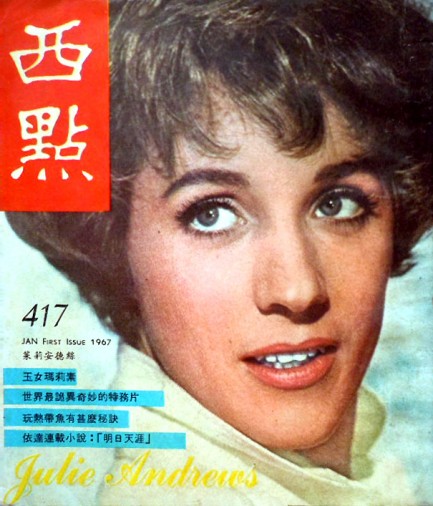
Above are six issues of Hong Kong’s West Point magazine, named for a geographical feature of Hong Kong Island. The insides of these are not as visually interestings as the outsides, owing mainly to the poor quality printing and coarse paper stock, but if you’re curious you can see some interior pages here. You may also be wondering if West Point had coverage of Asian celebs. Yes, but unfortunately they weren’t allowed within light years of the magazine’s cover, as far as we can tell. These issues, top to bottom, date from the early-’50s to 1967 and feature Barbara Lang, Ann-Margret, Rock Hudson, Jeanne Crain, Michèle Girardon, and Julie Andrews.





































































